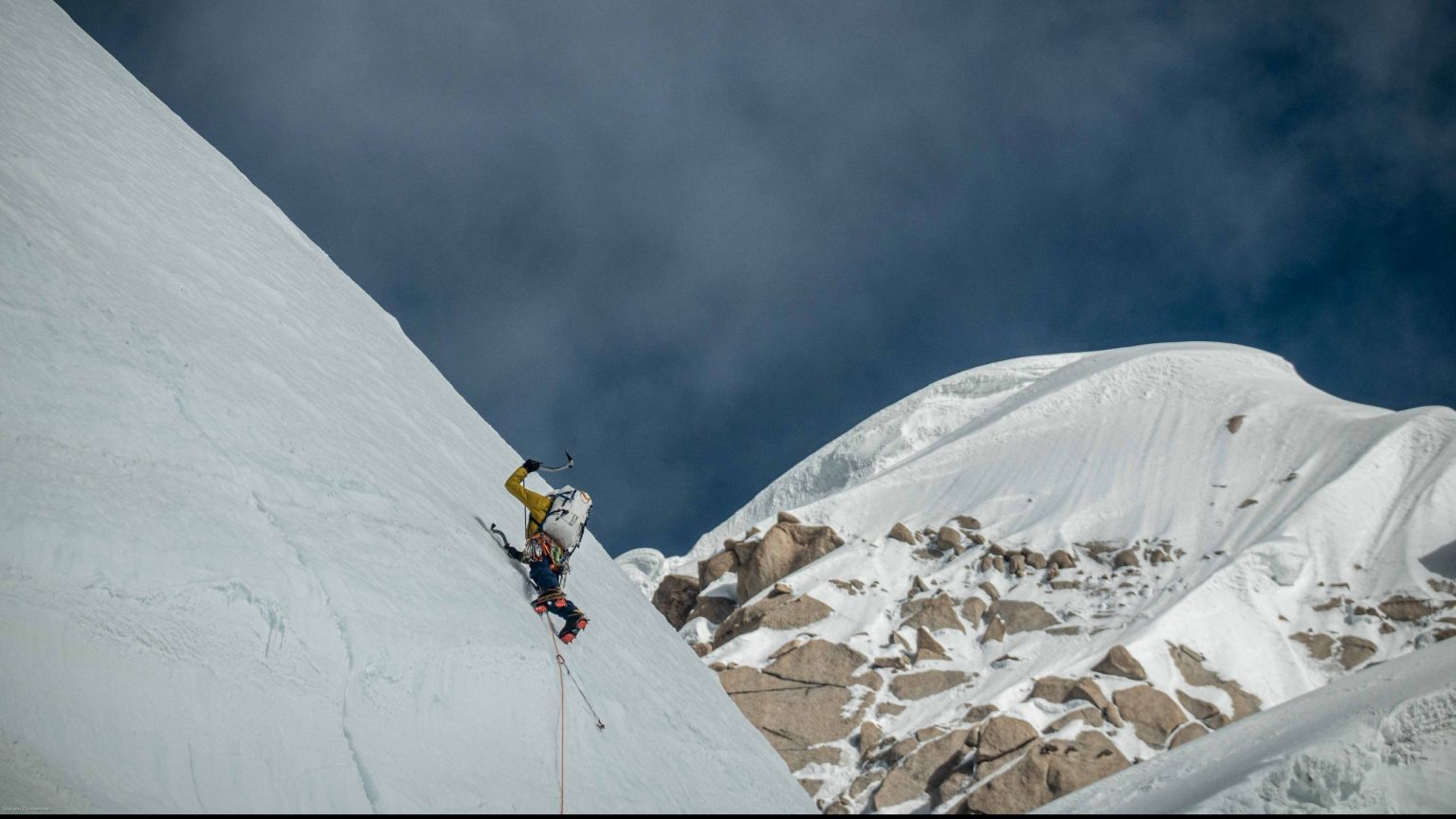Cry in the Dojo, Laugh on the Battlefield
By Chris Writght.
The older I get, the more truth I seem to find hidden in clichés. This thought occurred to me recently as I’d been holding back the urge to vomit for the better part of an hour. It was too late and too hot, and I was struggling to keep the sweat rolling off my forehead from getting into my eyes. My head swam, my legs burned, and I dearly wished that I had woken up earlier. It was barely late morning, but the sun was scorching, I was wilting, and my 10-inch oscillating fan was no match for the dank air of my garage. I’d forgotten how oppressive Central Oregon desert summers could be, but then again I hadn’t spent one at home in almost a decade (thanks, pandemic). Slumped against my workbench, I glared at my phone’s timer as it again came around to zero. The kettlebell stared up from the floor, and I hefted it again and returned to my grunting, my mind fleeing to somewhere colder, higher, and far, far away. Cry in the dojo, laugh on the battlefield, they say. I was not about to start crying per se, but it was not out of the question either.
If you never took karate lessons as a kid or craved samurai movies and Wu-Tang Clan records, that particular truism might not yet have found you. (Start with director Akira Kurosawa’s masterpieces Seven Samurai and Throne of Blood and it will quickly.) If not, dojo is the traditional Japanese word for the martial artist’s training ground. When I was growing up in the ’80s and ’90s, American pop culture was awash with borrowed images of the martial artist cum warrior. From The Karate Kid to the Teenage Mutant Ninja Turtles and Jean-Claude Van Damme, transformational training montages spanned the horizon. Like so many 10-year-olds, I wanted to swing the nunchucks and wear the black belt, but the working hard part was lost on me.
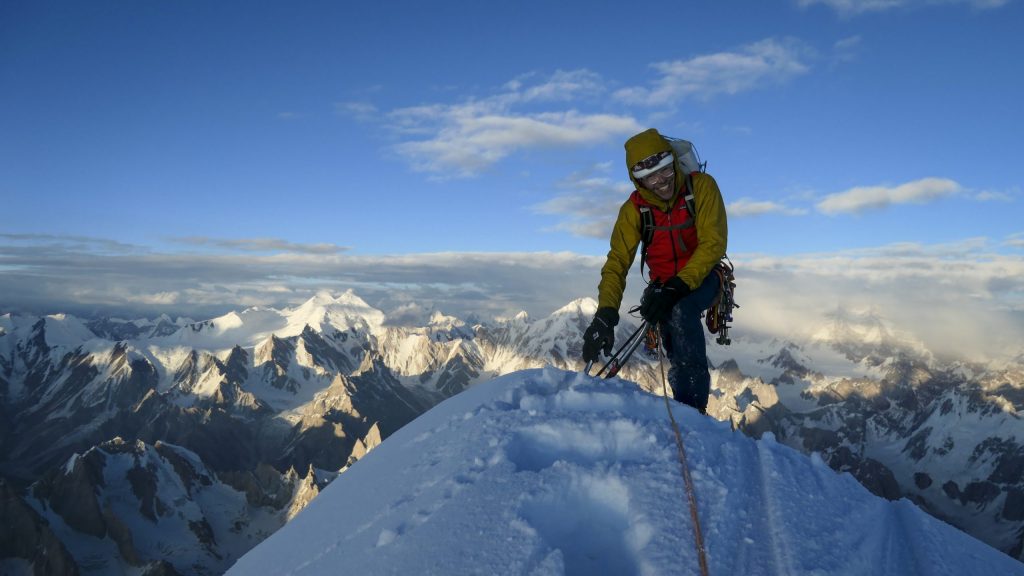
As the sun lit the peaks of the Karakoram on fire late one cold August evening last summer, I stepped into my climbing partner’s arms and screamed with joy into the coming night. Soon we pulled the ropes tight and were joined on our snowy crest by the rest of our team. After six hard days of climbing and a years-long roller coaster of effort and emotion, our four-man team had just made the first ascent of the 7,041-meter-tall Link Sar, one of the world’s last great unclimbed peaks, via its 2,300-meter east face, and from our vantage I could see the vastness of the greater Himalaya spread out in all directions. It was a magical moment to share with three men I will love forever, and it will indelibly stand in my memory as a high point in a career spent chasing such occasions.
Magical as those moments were, the days, weeks, and years leading up to them bring to mind another cliché, oft attributed to Thomas Edison (not a samurai), which is that genius (which I’m not claiming) is 1 percent inspiration and 99 percent perspiration. Alpinism appears to have a similar ratio, which of course brings me back to my perspiring all over myself just last week. Trudging up what felt like the eight millionth pitch of steep snow and ice on our summit day back in Pakistan, I couldn’t help but think how glad I was that I’d carried so many heavy packs full of rocks and water up local hillsides and gotten through so many hateful garage workouts at home in the years prior. I do remember being tired, of course, but I also remember thinking, “Huh. Training, it works.”
Circling back to the dojo then—and I do want to take this moment to say that I neither own any swords nor have any Asiatic character tattoos—our Link Sar expedition was, for me, an overwhelming confirmation that training, that is to say hours upon hours of structured effort over a long period of time, works. It wasn’t a eureka moment exactly, but close. I felt unstoppable out there, and I remember marveling at what a fine thing it was to have one’s body feel like an effective machine. The thing is, though, if you’ll indulge the cliché one more time, that behind every warrior is a sensei, or teacher, or in this hero’s journey, a coach. The entire reason that you’re reading this, in fact, is because some time after the bags were unpacked and the dust had settled on the expedition, I had to call Scott (Uphill Athlete co-founder Scott Johnston) to say thank-you. See, Scott’s been telling me what to do for about six years or so now, and I’ll tell you what I told him, which is that I’m incredibly grateful for his help because there’s no way I would have done it without him. I put in the work, but that whole train smarter not harder cliché has a lot of truth to it, too. Turns out it’s still fucking hard, but with the right direction that effort is not wasted.
…moving upward, head in the clouds, feeling strong, free, and climbing high are. Laughing on the mountain, if not the battlefield, is worth all the crying.
My point is that in order to climb anything worthwhile you’re going to need to put the time in. This should not be a surprise. But what might be is how satisfying it is when you realize the returns. If you’re anything like me, core workouts far more easily evoke misery than happiness. Weighted vest box step-ups and 10-week endurance cycles are not leisure activities in my world. Training calendars, heart rate monitors, and heavy weights aren’t among my favorite things, but moving upward, head in the clouds, feeling strong, free, and climbing high are. Laughing on the mountain, if not the battlefield, is worth all the crying.
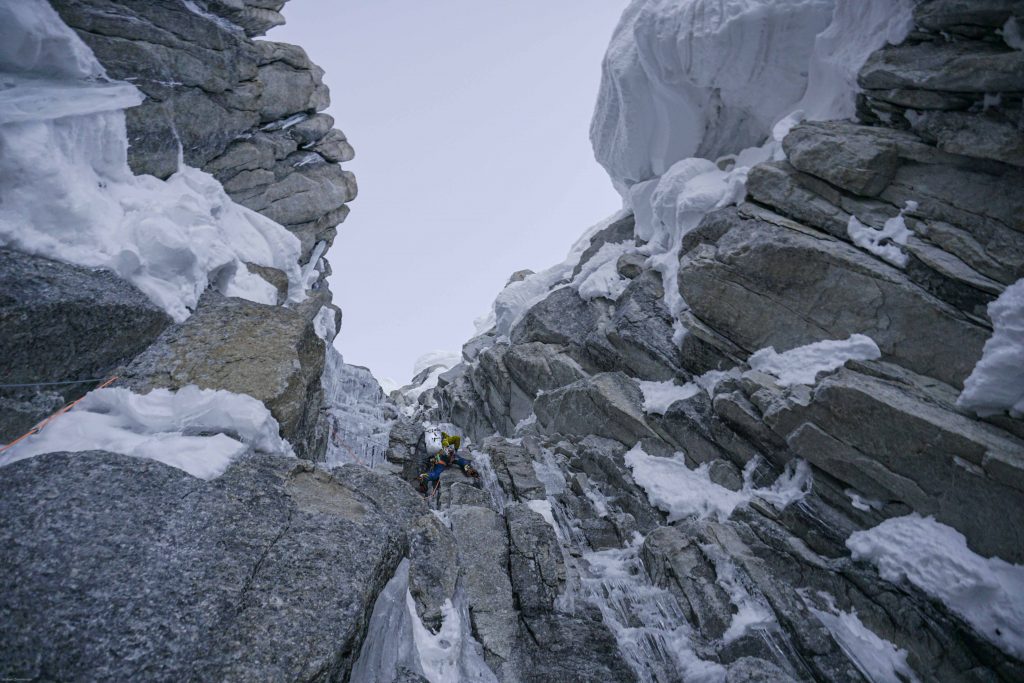
Because this is an organization dedicated to that part of the adventure, here’s the very short version of what I’ve learned about what you need, physically speaking, to climb a mountain like Link Sar.
First off, you’re gonna need an aerobic base. The best way to explain that, in my understanding, is that in the high mountains the human body is simply not capable of a high-end effort. Without adequate oxygen, we can’t go hard, so we need to make our low ends as effective as we can. For me that was built through 20-plus years of running and about 15 years of near-constant climbing, both for fun and through my work as a mountain guide. That means a lot of hours going slowly uphill, developing both leg strength and aerobic fitness in the process. My summers are spent hiking trails on approaches, and climbing on snow, ice, and rock in the mountains. At this point I’ve probably been to the top of Mount Hood over two hundred times (and on the mountain hundreds more), and up Mont Blanc and the Matterhorn more already than I’d like to count. On my days off I’m running and rock climbing, often in the Alps where big vert is easy to find, but equally often sneaking in a lap around Smith Rock after work here in Oregon, crawling up the gravel hill on Burma Road as the Cascades look on, or pulling my hardest on our tiny holds only to fall off again. In the winters I’m ski touring or ice climbing with my guests, my friends, or by myself almost every day, slowly racking up vertical—three, four, or five thousand feet at a time. In the spring and fall I’m usually doing some version of the same, often with more technical climbing and personal adventures, and of course expeditions peppered in there as well. As a result, I don’t worry much about my base.
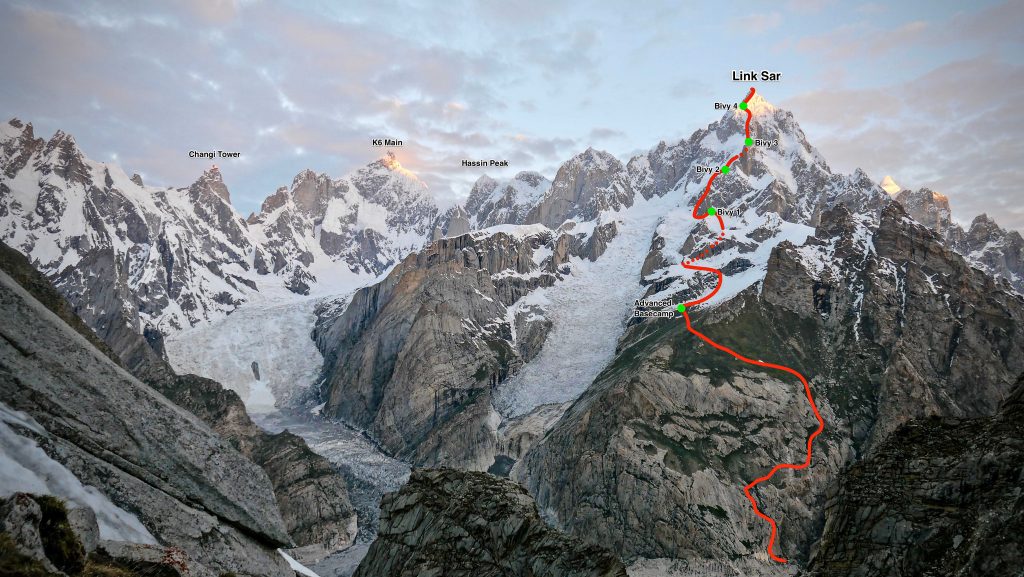
Instead, I have to concentrate on a few other things, but before I get into them let me first try to define the type of climbing I do. Specificity is important, and I’m training for a very particular thing, which is exploratory alpine climbing at what just about qualifies as high altitude. I say this because we all have limited time and resources to put toward our mountain pursuits, and while generalization is in itself in many ways the specialty of the alpinist, I and most other climbers still have to train primarily for one thing in order to do it well.
For me, that thing essentially requires that I have exceptional aerobic capacity, strong, fatigue-resistant legs, and an upper body that can support climbing and moving on a variety of terrain for a long time while carrying a load.
Alpinism, in my practice at least, is more demanding than traditional mountaineering in that it involves a great deal of technical climbing, often at a fairly high level—sustained sections of vertical to overhanging ice and mixed climbing up to usually around WI5 and M7, as well as the occasional rock or aid section of up to about 5.11 or A2. For me, if a route is going to go, it’s unlikely to involve much free climbing that’s harder than that as I’ll just start aiding for the sake of speed, and big-wall-style aid lines with more severe difficulties aren’t really my thing. At the same time, this style of climbing is less technically demanding than pure, hard rock or mixed climbing as there’s rarely a particular move or sequence that stretches one’s strength, power, and technique the way an extreme route or boulder problem would. As a result, my energies aren’t focused on one-armed pull-ups or crushing finger strength because I don’t need to climb 5.14 or V10 in the mountains; I just need to be able to climb 5.10 and its ice and mixed equivalents all day long, day after day, with a pack on, and to be able to pull out a harder lead now and again if I have to.
The tricky part is that the alpinist also needs to be able to climb quickly and securely on less technical terrain, especially moderately angled snow and ice, for long periods of time. That could mean endless front-pointing up bullet-hard ice or, as was far too common on Link Sar, trenching upward through deep, soul-sucking snow. To do this, the alpinist needs to have developed a high degree of efficiency in their heart, lungs, and legs. Because of these demands, I’ve focused my training primarily on two things: aerobic fitness and muscular endurance in my legs. Those two goals have occupied probably 70 percent of my training time over the last seven years or so that I’ve been focused on high-level alpine climbing. The other 30 percent is spent on maintaining my technical climbing, core strength, general strength (pushing, pulling, etc.), and leg strength.
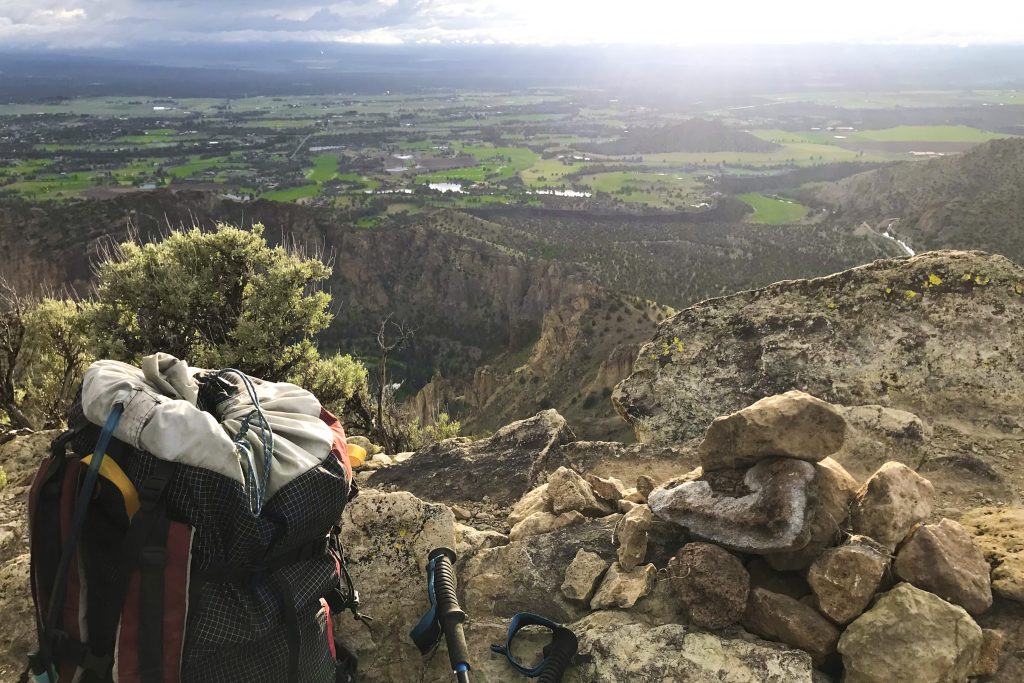
This emphasis on Zone 1 and 2 aerobic effort is probably not new to anyone familiar with the world of Uphill Athlete, but as I’ve heard myself telling clients countless times over the years, mountain climbing is more marathon than sprint. It would be neat to run fast one day, but exploring the mountains on foot is satisfying enough for now. Similarly, while I would theoretically love to climb 5.Crazy or M-Hard one day, they’re probably not in the cards. If I quit caring about expedition climbing so much, perhaps I could find the time to train for those things instead, but since it’s not likely to happen anytime soon I’ll have to be content with the occasional hard send at the crag, and an awful lot more maintenance sessions.
Still, as long as the pandemic keeps me grounded, I will keep throwing myself at (and off) the campus board, but mostly I’ll be plugging away at the never-ending task of training my legs and lungs to make the best of thin air, dehydration, cold, and hunger, and to run on dreams of pointy summits instead. In the process I know I’ll pour more sweat onto the snow, rock, and cement, and I’ll cry with a variety of anguished grunts and groans, if not tears, that hopefully only I’ll ever hear. And who knows? Whether the next expedition brings success or failure, in my experience there may be tears on the battlefield too, but with a little luck they just might be tears of joy.
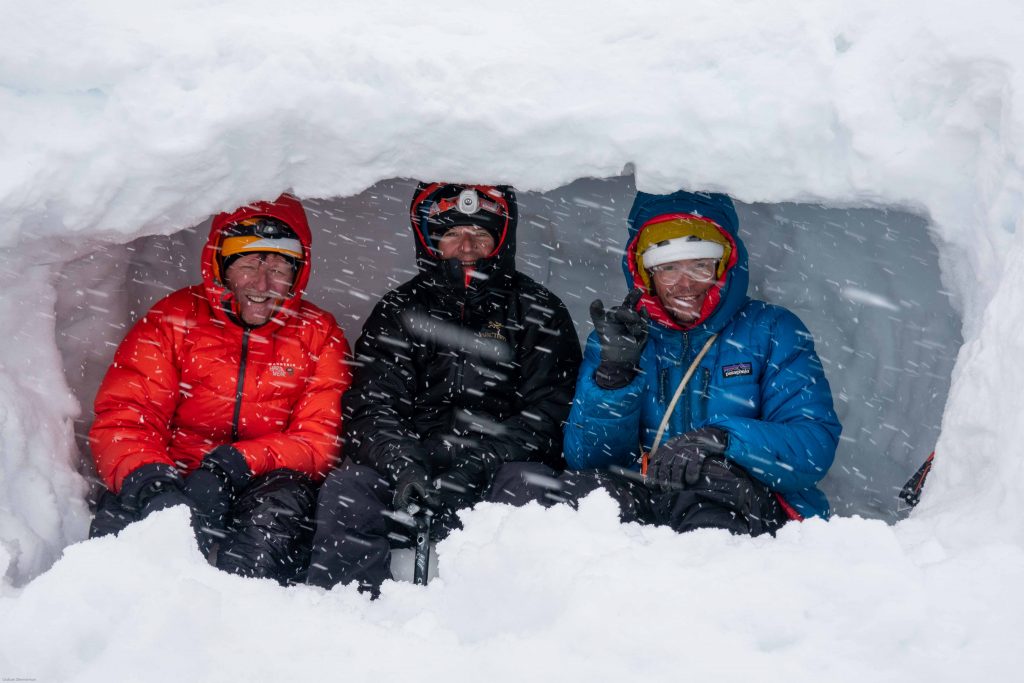
Chris Wright is an alpinist and IFMGA Mountain Guide based in Bend, Oregon, and Chamonix, France. He, along with his partners Graham Zimmerman, Steve Swenson, and Mark Richey, received the Piolet d’Or for their 2019 climb of Link Sar’s Southeast Face (M6+ WI4 90°, 2300m). When he’s not glaring at his watch, Chris is likely somewhere in the hills obsessing over mountains and food. You can read more about his Link Sar climb in the Spring 2020 issue of Alpinist Magazine and the March 2020 issue of Rock and Ice, and all of his adventures at www.nowclimbing.com.
You might also be interested in:
The Uphill Athlete Podcast: Talking High Altitude Training with David Goettler

